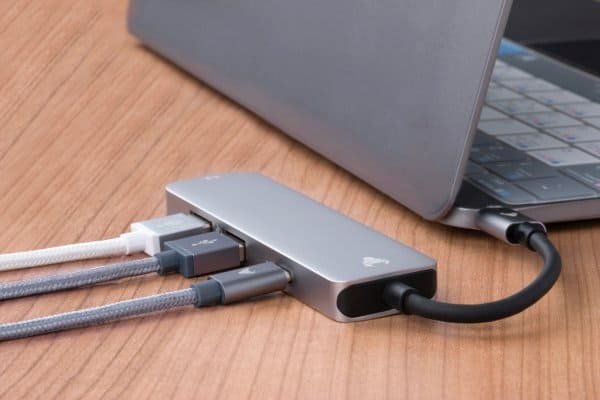HDMI 2.1 is the latest update to the HDMI standard. It offers several new features, including support for 8K video and a high dynamic range (HDR).
HDMI 2.1 also includes a new cable standard, called Ultra High-Speed HDMI Cable. This cable supports data rates of up to 48 gigabits per second, which is fast enough to support 8K video at 60 frames per second.
HDMI 2.1 is the latest update to the HDMI standard. It supports higher resolutions, faster refresh rates, and HDR. It also includes several new features, such as eARC and Quick Media Switching.
What Is HDMI 2.1?
To take full advantage of HDMI 2.1’s increased bandwidth and all that HDMI 2.1 has to offer, you’ll need a new 2.1 compatible cable. Any device that uses HDMI 2.1, such as a game console or Blu-ray player, must have a cable included.
This cable is fully backward compatible, so you can plug the cables that come with new consoles into the HDMI 2.0 port and they will work just fine. Cables aren’t very expensive (and many devices like the PS5 have them), but if you’re buying a cheap one, you’ll want to double-check if it works with HDMI 2.1.
While you can use a specific cable with devices with older specified ports, you will lose the benefits offered by HDMI 2.1. While an HDMI 2.0 cable can produce impressive images, it is not ideal for watching content that requires smooth movement, such as sports or video games.
As for the potential extra bandwidth of HDMI 2.1 when it comes to resolution and frame rate, only a handful of TVs can take advantage of it, meaning only game consoles and PCs.
In recent years, there has been a push to support resolutions and frame rates above 4K/60fps, which HDMI 2.0 cannot. HDMI 2.1 goes beyond 4K/60fps by adding support for various resolutions and rates from 4K/50fps to 10K/120fps.
As mentioned in the resolution section, HDMI 2.1 can support higher frame rates for smoother video.
With HDMI 2.0b, we could enjoy a maximum resolution of 4K with a maximum frame rate of 60Hz. HDMI 2.1 could go even further, supporting resolutions up to 10K at 120Hz, although this capability is not yet available or supported on commercial TVs. HDMI 2.1 can offer much better video performance, including 4K resolution at 120fps and 8K resolution at 60fps.
The increased bandwidth supported by HDMI 2.1 enables TV manufacturers to release new devices with resolutions up to 10k (10420×4320). HDMI 2.1 offers more bandwidth, almost three times the bandwidth of HDMI 2.0. In the future, however, the HDMI 2.1 standard will ensure sufficient bandwidth for metadata and high frame rate HD signals.
The higher bandwidth of HDMI 2.1 requires a more advanced processor in the display, so any existing display that only supports HDMI 2.0 is unlikely to support higher resolutions or refresh rates. Achieving significant support for 4K 120Hz (including uncompressed 10-bit color) requires more bandwidth than HDMI 2.0.
With the new HDMI connection enabled, resolutions up to 10K at up to 120Hz can be handled. HDMI 2.1 is also future-proof and supports resolutions up to 10K, although it will take some time for commercial TVs to accept this capability.
One of the great upgrades it brings is native resolution support up to 10K instead of 4K resolution, which was maxed out by the previous version. HDMI 2.1 also better supports 5k resolutions up to 60Hz (where HDMI 2.0 required compression technology to work) and 8K resolutions at 30Hz.
48Gbps is almost three times the bandwidth of HDMI 2.0 which means that HDMI 2.1 can deliver higher resolutions and higher refresh rates. This means that HDMI 2.1 has the most features and the highest bandwidth of all versions of the audio/video interface. HDMI 2.1 is a new HDMI standard that provides higher video resolutions up to 10K and higher refresh rates than regular HDMI 2.0.
More features are added as TV needs change, and HDMI 2.1 is the next big step. If you want to take full advantage of the latest version of HDMI, you’ll need a few select upgrades and possibly new cables. HDMI 2.1 cables are available from Cable Matters for not much more than HDMI 2.0 cable, so as your devices upgrade, it makes a lot of sense to gradually switch to Humble HDMI Cable.
In some rare cases, it is possible to use an existing High Speed Certified HDMI cable with a newer HDMI 2.1 device, but as the amount of information crammed into this digital pipeline is rapidly increasing, we recommend that you purchase new HDMI cables such as Ultra High Speed as well as any device compatible with HDMI 2.1 which does not yet include them.
Just remember that HDMI 2.1 is backward compatible, so it doesn’t hurt to invest in a few super high-speed cables if you plan on investing in some new home theater equipment in the coming years.
HDMI 2.0 cables are all the same, despite what some manufacturers try to tell you with their branding, but you will need a 48Gbps HDMI 2.1 cable to experience the possibilities of the technology, and you will need a compatible HDMI 2.1 port on any device connection, as well as equipment (TV, soundbar).
There are many cables out there that claim to support HDMI 2.1 48Gbps throughput, and many do, but it’s worth buying a certified cable to be sure.
The updated version of DSC greatly increases the maximum bandwidth that HDMI cables can carry without compromising image quality. All that extra bandwidth opens up access to a humble HDMI cable for higher resolutions and refreshes rates than before, making it a real contender for the top-notch DisplayPort standard.
This resolution and increased frame rate make HDMI 2.1 the cable of choice for next-gen gaming on consoles such as the PlayStation 5 and Xbox Series X, both of which offer full HDMI 2.1 support.
HDMI 2.1 also supports brand new features such as dynamic HDR, low latency auto mode, and Enhanced Audio Return Channel (eARC) for a more immersive audiovisual experience.

